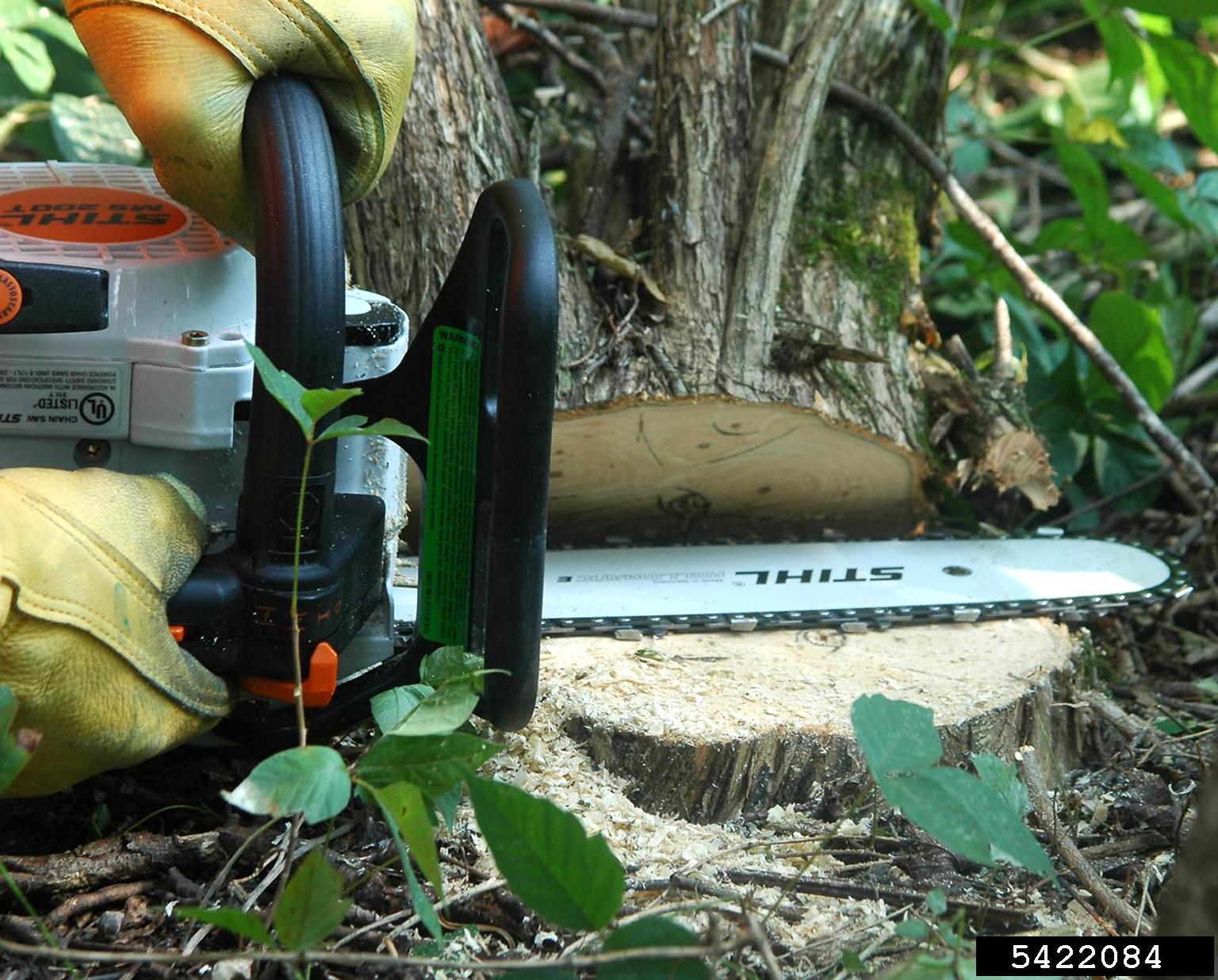 Chainsaw Safety - September 23, 2020 Jeff Schalau, Agent, Agriculture & Natural Resources University of Arizona Cooperative Extension, Yavapai County Chain saws can be great labor-saving tools. They can also quickly cause severe injury or death. According to the Centers for Disease Control and Prevention (CDC), approximately 36,000 people are injured by chainsaws annually. Medical costs for chainsaw injuries based on these facts amount to about 350 million dollars per year. Most of us know someone who has had a chainsaw injury or close call. There are many things to know about chainsaw use and I highly recommend taking a chainsaw safety class. First, ask yourself if you really need to use a chainsaw. If you are pruning and have only small branches to cut, use a pruning saw or loppers. Chain saws are not well suited for pruning small branches of live trees and can create a wound that compromises the health and vigor of the tree. Sharp, hand pruning saws always make a cleaner cut and cause less injury to the tree. If you purchase a chainsaw, read the owner's manual before operating the chain saw for the first time. Note the safety practices. Note how to check and adjust the chain tension. This is extremely important for safe operation. If you have not already done so, purchase the appropriate personal protective equipment for use with your chainsaw. This should include: ear protection, safety glasses or goggles, heavy duty non-slip gloves, sturdy boots (steel toes if possible), trim fitting clothes, Kevlar chaps, and possibly a hard hat. Put the chain guard on the saw when not in use. Always carry the saw at your side with the cutting bar and chain to the rear and to the outside. Never carry a chain saw in the passenger area of a vehicle. Use the fuel mix recommended by the manufacturer. Never fuel a hot chain saw; let it cool first. Always fuel in a clear area away from debris. If your fuel can has no spout, use a funnel. Wipe the saw clean of any spilled fuel after fueling and never smoke while fueling. There is only one safe way to start a chain saw: move 10 feet or more away from the fueling area; place the saw in a clear, debris-free area; hold the saw firmly on the ground by putting your foot through the rear handle (if possible) and by holding it down with one hand on the top handle; pull the starter cord with the other hand; the chain should not be moving while the saw is idling; never start the saw while holding it off the ground. Clear away anything that has a chance of interfering with the operation. Remove debris that could cause you to slip or lose your balance or accidentally contact the chain. Keep both hands firmly on the saw when cutting. Avoid kickback at all costs. Kickback occurs when the saw rotates back, or "kicks back" at the operator, due to the nose of the saw contacting an object or obstruction. Ensure your saw is equipped with chain brake or kickback guard. Here are a few rules that must be followed. Hold the saw firmly with both hands. Grip the top handle by putting the thumb around it. Watch for twigs that can snag the chain. Don't pinch the chain while cutting. Saw with the lower part of the bar close to the bumper, not on the top near the nose. Maintain high saw speed when entering or leaving a cut and keep the chain sharp. Do not reach above your shoulder to cut. The chain is too close to your face in this position. Many injuries occur because the operator got tired or withstood long periods of saw vibration. Take frequent breaks and quit working if you are tired. Cutting down large trees is not simple and should be left to experienced operators who have experience felling trees. Limbing requires proper position and consideration of kickback potential, the springing back of branches, and the chance the log will roll. Bucking (cutting a log into lengths) requires knowing how to block the log to prevent binding, kickback, and rolling. If you are not familiar with these operations, get more information from your owner's manual, a saw dealer, a book or video, or from an experienced operator. Additional resources are also included below. You can follow the Backyard Gardener on Twitter – use the link on the BYG website. If you have other gardening questions, email the Master Gardener Help Desk in Prescott (prescottmg@gmail.com) or Camp Verde (verdevalleymg@gmail.com) and be sure to include your name, location, and phone number. Find past Backyard Gardener columns or provide feedback at the Backyard Gardener web site: https://cals.arizona.edu/yavapai/anr/hort/byg/. Images  Chainsaws are a valuable tool but are also dangerous and can cause serious injury (James H. Miller, USDA Forest Service, Bugwood.org).
Chainsaws are a valuable tool but are also dangerous and can cause serious injury (James H. Miller, USDA Forest Service, Bugwood.org).Additional Resources Chainsaw Safety Tips, University of Georgia Extension extension.uga.edu/publications/detail.html?number=B1364 Operating a Chain Saw Safely, University of Missouri Extension extension2.missouri.edu/g1959/ Chainsaw Safety, Cornell Cooperative Extension monroe.cce.cornell.edu/environment/emergency-preparedness/chainsaw-safety How to Be a Chainsaw Hero, Essential Craftsman. |